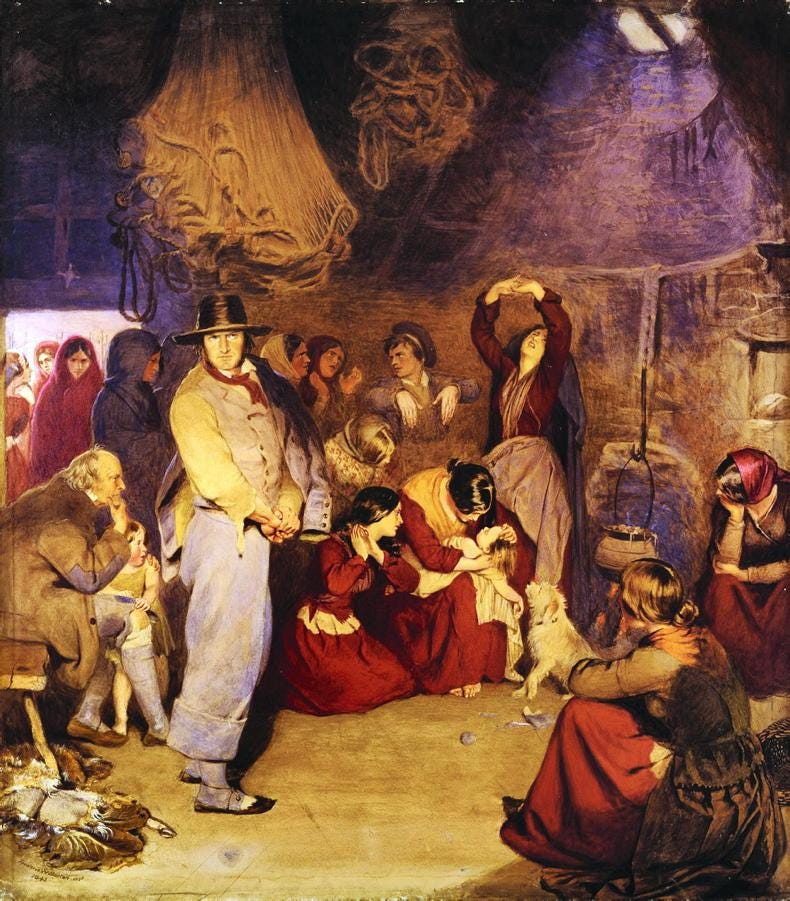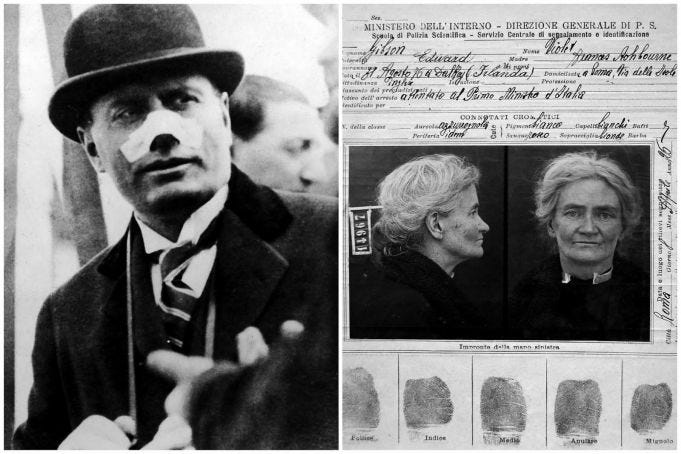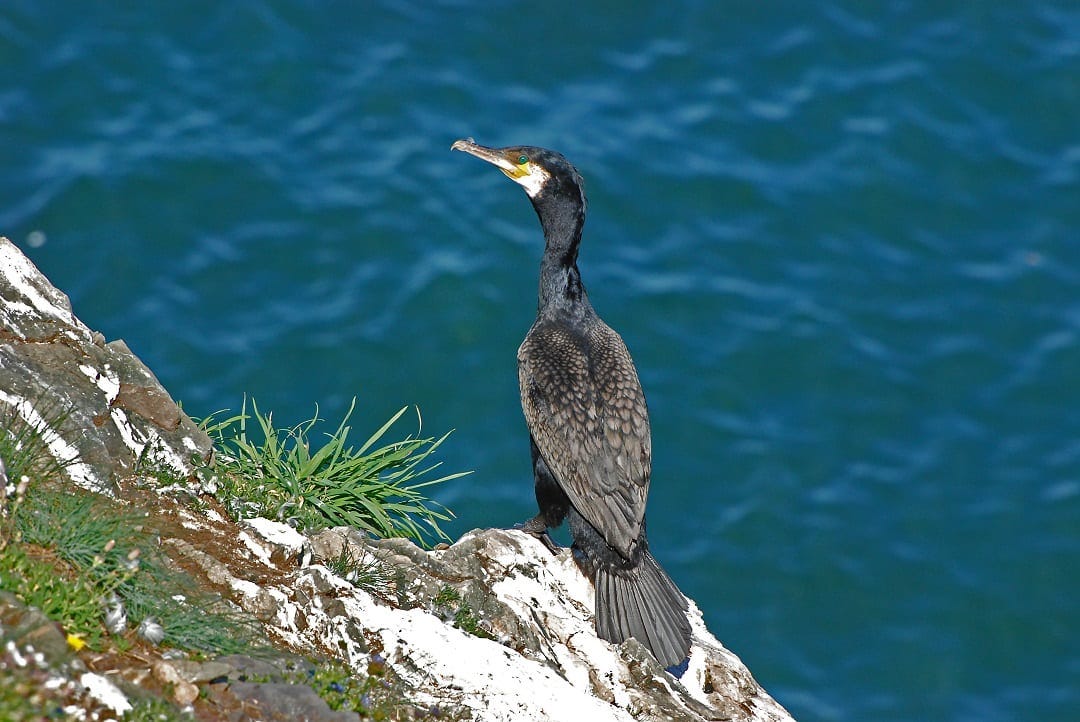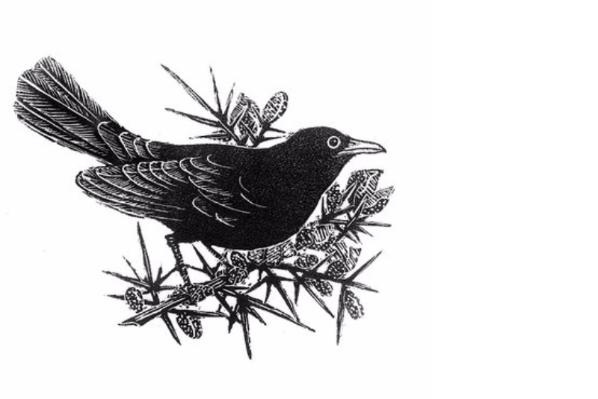Link to playlist to accompany map:
Link to map (which includes more pictures, lyrics and information):
https://www.google.com/maps/d/edit?mid=1tNo40GBw0V1BdArKMUyOioX7LYRn_fE&usp=sharing
Lisa O’Neill is a singer-songwriter from County Cavan. Lisa moved to Dublin when she was eighteen to study music. After graduating Lisa stayed in Dublin writing songs and consequently some of her songs have pieces of Dublin. In fact, The New York Times article written about Lisa entitled “What’s Driving a Fresh Wave of Irish Music? Tradition.”[1] opens with the word ‘Dublin’ in all capitals; “DUBLIN — The 40-year-old Irish singer Lisa O’Neill’s north Dublin flat is filled with books, records, instruments and talismanic chachkas. A Sinead O’Connor photo flanks a Johnny Cash portrait on a shelf next to a ceramic teapot; a Patrick Kavanagh poetry collection tops a pile of paperbacks; a Margaret Barry LP jacket gets pride of place on her upright piano’s rack”. These memorabilia scattered around Lisa’s Dublin apartment tells she is a modern artist trapped in ancient times. But she is also completely herself. This is just like how Lankum’s singer and multi-instrumentalist Radie Peat describes it, Lisa O’Neill is “confident about her identity as an Irish person and is not trying to recreate things seen or done somewhere else.” The aim of this essay to imagine a Dublin through the world of Lisa O’Neill and her songs, that is a modern Dublin trapped in ancient times. This essay will specifically do this by writing about 10 locations in Dublin through the lyrics of a Lisa O’Neill song.
1. National Art Gallery
The first location is the National Art Gallery which houses the painting entitled The Aran Fisherman’s Drowned Child (1841) by Frederic W. Burton(also known as The Meeting on the Turret Stairs guy), an Irish painter from Cavan. Lisa’s song “A Year Shy of Three” is about this painting. This painting depicts the scene after a child was found drowned on the beach in the Aran Islands. In the painting, the family gather as the Mother holds her dead child.
When this painting was exhibited in 1841, The Spectator newspaper wrote about how the expression of the characters in this “tell the sad story in a manner more effecting from its accordance with national character and custom”[2]. This painting shows grief experienced by an Irish family without saying a word. Another Lisa song “If I was a Painter” is about how she sometimes wishes she could be a painter when she is trying to write something. The particular scene that inspired this song was in the underground in London. Lisa observed how everyone was on their phones except for an old man who probably lived through the world war and maybe even dug these tunnels with his own bare hands. Lisa was thinking about how none of these people on the underground are ever thinking about the people who dug these caves. I think that would be a good painting. But since Lisa is not a painter, in the “A Year Shy of Three” song that is based on the The Aran Fisherman’s Drowned Child painting, she is imagining herself as the Mother of the drowned child, and in doing so able to give her a voice.
2. Violet Gibson House
The second location is the home of Violet Gibson in relation to Lisa’s song “Violet Gibson”. Gibson was an Irish woman who shot Mussolini, Italy's National Fascist Party leader. Gibson was born in Dublin, Ireland on the 31st of August 1876. Gibson’s Father was an Irish lawyer and politician. Gibson was a well-read woman. One day Gibson decided she had enough with fascists so she went over to Rome with a Modèle 1892 revolver hiding in her black shawl and a rock (Lisa reckons the rock was for emotional support) and then shot Mussolini in the nose as he was leaving an assembly of the International Congress of Surgeons, to whom he had delivered a speech on the wonders of modern medicine. The picture of Mussolini with his hurt nose is very cute in a pathetic sort of way. The police decided Gibson was probably insane because she was a woman working alone to shoot Mussolini, and so she was released without charge. Mussolini described the whole ordeal as “a mere trifle”. Gibson did not have Irish citizenship because of her Unionist views, so she was deported to Britain where she was committed to a psychiatric hospital in Northampton. Gibson was never released from the psychiatric hospital. Gibson died in there in 1956. Gibson was also buried there, she never escaped.
A commemorative plaque for Gibson was only unveiled at 12 Merrion Square in 2022. There have been forty five plaques erected to commemorate those who have contributed to Dublin city, but only seven of them commemorate women. Speaking at the unveiling of the Gibson plaque, Lord Mayor Caroline Conroy acknowledges this saying; “We all know that over the years, the role of women in our national life, in the story of our city, has not been given the attention it deserves. We in the city council and have been working through our various activities to put a focus on women in history”[3]. Only took them 66 years to do so…
Lisa’s song, “Violet Gibson”, is told the perspective of Gibson and in this way is able to reframe Gibson’s intentions as “For the love o' truth not violence“, ultimately suggesting that Gibson’s intentions were not violent or insane but for peace and love. At the time Gibson was reduced to “silence“ and this is why she was forced to act and ended up shooting Mussolini. I don’t think a person is crazy for wanting to shoot Mussolini. I want to shoot Mussolini.
3. Brian Boru Statue
The third location is the Dublin Castle in relation to Lisa Lisa’s song “Gormlaith’s Grieving”. On the previous location of this map it was pointed how out of the forty five commemorative plaques in Dublin city only seven commemorate women. There is also no statue of Gormlaith but there is one of her husband Brian Boru, High King of Ireland, which is located outside Dublin Castle Chapel. In this, the absence of historical women from contemporary Dublin city becomes clear.
Gormlaith was married to Olaf Cuaran who was Viking King of Dublin until he died in 981. Gormlaith and Olaf had a son who went on to be King Sigtrygg Silkbeard but he also died in the Battle of Glenn Máma in 999. Gormlaith then married Máel Sechnaill Mac Domnaill but he died too. After this Gormlaith married Brian Boru, and they has a son, Donnchad, who became King of Munster. So Gormlaith had to suffer the loss of three men in her life. However, apart from who her husbands were, very little is actually known about Gormlaith herself, hence the title of Lisa’s song, “Gormlaith’s Grieving”. All that is known about Gormlaith is her grieving. Sometimes an absence can be a presence.
Since little was recorded about Gormlaith, Lisa takes on and imagines the perspective of Gormlaith in her song “Gormlaith’s Grieving”. Lisa sings about how her “Silky white skin” is a place “where nobody’s been”, and how she was “offered… up to the/ unknown”. So rather than being just a song about Gormlaith grieving the loss of the men in her life, it is also a song that mourns the loss of Gormlaith herself, in the way that she is to remain largely absent and forgotten to the contemporary literature of the city because little was recorded about her.
4. North Strand
The forth location is the North Strand in relation Lisa’s song “Along the North Strand”. The North Strand a residential inner city neighbourhood on the North side of Dublin city that has high-profile instances of crime and antisocial behaviour. In this song Lisa sings from the perspective of a girl who tells the story of a boy from the North Strand who promised to marry her. The girl agrees and the two ride away on horses together. But when they reach the canal, the boy tells the girl to take off her expensive silks so he can steal them. After this the boy says that he will murder the girl, and that he has already drowned six women. However, after hearing this, the girl grabs the boy and drowns him before he can do anything to her. Then after the girl arrives home she makes a deal with her parrot for it not to tell her parents what happened. The girl knows the parrot will keep her secret “For [she]… ha[s it’s]… cage of the glitter and gold/ And…[its] door of the best ivory”. A parrot can talk but if a parrot is talking no one is taking that seriously and are just laughing at them like an entertainment.
Lisa based this song off a late 18th century murder ballad entitled Lady Isabel and the Elf Knight[4] In writing this song Lisa did not change the story in any way, all that she did was alter the location to be the North Strand in inner city Dublin. So Lisa put this late 18th century murder ballad in a contemporary location, but she did not need to change its story. Much to think about here.
5. Patrick Kavanagh Statue
The fifth location is the Patrick Kavanagh statue beside Dublin's Grand Canal, inspired by his poem Lines written on a Seat on the Grand Canal, Dublin:
O commemorate me where there is water
canal water preferably, so stilly
greeny at the heart of summer. Brother
commemorate me thus beautifully.
This location is in relation to Lisa’s song “All of this is Chance” that is inspired by Kavanagh’s poem, The Great Hunger. Patrick Kavanagh was an Irish writer born in rural Inniskeen, County Monaghan, in 1904 as the forth of ten children. Kavanagh left school at thirteen to become an apprentice to his Father as a shoemaker and later work on the farm. Lisa explained said the following about this song in an interview;
Patrick Kavanagh in The Great Hunger says “come with me imagination, into this iron house and we will watch from the doorway the years run back and we will know what a peasant’s left hand wrote on the page’.” There’s so much in that: the peasant is not worthless, the peasant writes with his left hand, the right side of the brain, which is creative, and what he wrote is worth something. He is not an academic, he is a man of the land and he did feel that imagination was the best, and the spirit of the people oppressed as well, the true sense of themselves which was a healthy relationship with the land.[5]
This is an interesting take on the Great Hunger. About the peasant Kavanagh rather said, "Although the literal idea of the peasant is of a farm labouring person, in fact a peasant is all that mass of mankind which lives below a certain level of consciousness. They live in the dark cave of the unconscious and they scream when they see the light." He also commented that, although he had grown up in a poor district, "the real poverty was lack of enlightenment [and] I am afraid this fog of unknowing affected me dreadfully." One ought to live in a dark cave to be creative. That reminds me of this art:
I hope the old man can still let be in the cave.
6. Train Station
The sixth location is Connolly train station, but in relation to Lisa’s song “No Train to Cavan” that is about how there is no train from Dublin to Cavan. Connolly station is one of the busiest train stations in all of Ireland. Despite this, there is no train to Cavan from it. A train station was opened in Cavan in 1862, but it was closed in 1960 and became an office building. In 2023 it was suggested that counties Donegal, Cavan and Monaghan would be reconnected to the national rail network under proposals set out in a new all-island rail review. However, even if this actually happened, it would take nearly thirty years to be built. About this, Minister for Transport, Eamon Ryan, at the time said that these railways would bring better balanced regional development and that “You can’t do everything in Dublin...[so] If we don’t invest in the rest of the country, particularly in rail infrastructure, we would see an imbalance develop in the country”[6]. So the fact that there is no train from Dublin city to Cavan and other parts of the countryside signifies an imbalance developing between countryside and city, an imbalance mainly in the absence of the countryside from the city.
In this same song Lisa tells a tale she was told about Cavan, about “a sort of fox man down there/ by the one tree/”. This tale caused Lisa to “wonder of this fellow” and question “Does he howl like a wolf?” or “Does he wear clothes?”. So unable to return home to Cavan, Lisa begins to think of stories about a fox man who lives under a tree there, and even wonders if this fox man is wearing clothes or not. This seems like a folklore or fairy tale rather than any reality. So even though Lisa is from Cavan, without any train back from Dublin city, the countryside even starts to become like a mythologised story in her mind. The previous song, “All of this is Chance“ based off Kavanagh’s The Great Hunger warns against this exactly, a glorification of the countryside. Today, there is no train to Cavan, the absence of the Irish countryside from Dublin city is growing, and our imaginations getting smaller.
7. Unitarian Church for Cúirt Caidreamh
The seventh location is the Unitarian Church to discuss Lisa’s song “Old Note” inspired by traditional Irish accordion player Tony McMahon who founded the traditional music show, The Long Note, which ran on RTÉ from 1974 to 1992. McMahon died in October of 2021 and his remembrance service was held in the Unitarian Church where many musicians gathered for a final cúirt caidreamh(evening of music).
Speaking about Ireland McMahon said, “we are not governed by the laws and mechanics, but the old religions, the old feelings that rocks and rivers and mountains are inhabited by spirits. They are not just shapes, they are three-dimensional beings”[7], so McMahon believed in a connection between landscape and human spirit, even suggesting that the Irish landscape is inhabited by spirits. This is exactly what Lisa captures in her “Old Note” song, singing; ”A star ran rings around the star before me/ And spun and swooped and sank in rock beneath me/ And mirrored what I've carried since I mеt me”, suggesting in these lines that it is when people forget the landscape, that they forget themselves. In this song the “Old Note” “float[s]” “new among…[her] mind”, making her to be “dreamin’” of “skies”, “birds” and rock” no matter where she is. Lisa’s “Old Note” suggests how song can bring us into a landscape even if it is not really there anymore and that’s a bit like magic. I don’t understand it.
8. Cobblestone Pub
The eight location is the Cobblestone pub. McMahon was an iconic figure in traditional music circles, and Lisa is a contemporary figure in traditional music circles. Traditional Irish music is usually preformed in pubs, Lisa expresses her preference for performing in pubs;
There might be only five people in the room, but it’s much more important than playing in front of a thousand people... They’re places where you feel safe to express and explore a new song or idea, but there’s also standards. It doesn’t mean that anything goes. There’s high quality as well. They’re important – like scared wells. They’re like classrooms but without the rules and regulations.[8]
So, to Lisa Dublin city pubs are like holy wells, where holy wells are sacred places with old traditions and customs. However, this sentiment is forgotten to most today, with demonstrations taking place to save pubs like the Cobblestone where “The music is not put on for show[but to]…. keep the tradition alive”[9]. In 2023 the Irish Vintners made an application for rural pubs to be put on UNESCO’s cultural heritage list in a bid to save Dublin pubs from becoming absent from the city. About this Lisa said;
The Cobblestone is a wonderful, exciting movement, but I wish it didn’t have to be happening, it’s shocking. Dublin is dying, like. Elements of Dublin that are fundamental and the basis of culture. It’s scary. What makes me annoyed is that there’s a huge recognition of the value of our culture and arts, but they’re not saving it, they’re selling it. I want to be honest, I want to be true about how I feel about thing.[10]
So in writing “Old Note” inspired by traditional musician Tony McMahon and the culture that surrounds this traditional Irish music scene Lisa is writing of the loss she sees happening before her very eyes. But this is a specific forgetfulness. Tradition is driving a wave of new Irish music with artists like Lisa O’Neill, Junior Brother, Lankum, OXN, Junior Brother, Lisa O’Neill, Ye Vagabonds, John Francis Flynn, The Mary Wallopers, Rufous Nightjar, Elaine Howley, Saoirse Miller, Róis, Madra Salach, etc. Ireland has a rich music scene grounded in tradition. However, it is the venues and places attached to this tradition that seem to be becoming lost.
9. Docklands
The ninth location is the Dublin Docklands in relation to Lisa’s song “Rock the Machine” about a man working on Dublin's docklands who is laid off. This song is based off when thousands of Irish men lost their jobs in the Dublin docklands in the 1960s to 1980s. Nineteenth century Dublin was not a city of factories, so most men were employed as labourers on docks. This work was irregular and working conditions were dangerous, there were serious injuries often. In her song Lisa understands:
These were “real people, with everyday lives, and they’re left with no wage anymore. A lot of these men would have started work down there after finishing primary school so they wouldn’t have had anything else to fall back on. Getting laid off isn’t just about a wage. To have a routine, and to have that pulled from under your feet; it’s the mental state that I would be concerned about in that situation, of a man, or a woman, of anyone who finds themselves without work. I am mostly concerned with that hopeless feeling of trying to replace a hole in your life.[11]
Advanced machinery moved in and put an end to the need for manual labour. This is a timeless story people still fear today with the ever growing threat of AI. However, in an interview about this song Lisa explained how “In Irish mythology, the Cormorant bird might appear to you in your dark hour with the purpose of taking your troubles away. I’ve spotted hundreds of Cormorants along the River Liffey.”[12] This is a picture of what a Cormorant bird looks like so we can look out for them:
10. Blackbird on Behan Statue
The tenth location is the Brenden Behan statue in relation to Lisa’s song "Blackbird" in the way this statue depicts Behan looking at a blackbird whilst sat on a bench. However, Lisa was inspired by Irish philosopher and poet John Moriarty to write this song. Particularly a story Moriarty told about walking home from a pub one night with a drunk friend. The drunk friend kept asking Moriarty to shorten the road, Moriarty didn’t understand what that meant. When the friend became sober he explained it meant to tell a story or, sing a song, to ease him and make the journey story. So in "Blackbird" Lisa is suggesting the bird to shorten her road on one of her dark days. So a lot of contemporary writers seem to find value in the blackbird. In this way, the blackbird is also emblem of Irish poetry since the The Blackbird of Belfast Lough[13], a short Irish verse from the 9th century:
(9th century Irish)
Int én bec
ro léc feit
do rinn guip
glanbuidi
fo-ceird faíd
ós Loch Laíg
lon do chraíb
charnbuidi
(Seamus Heaney Translation)
The small bird
chirp-chirruped:
yellow neb,
a note-spurt.
Blackbird over
Lagan water,
clumps of yellow
whin-burst!
Everyone should focus on the blackbird.
Conclusion
Sanas Cormaic (Irish for Cormac’s Narrative) is an Irish glossary containing etymologies and explanations of over 1,400 Irish words, many of which are difficult or outdated. The shortest and earliest version of the work is ascribed to Cormac mac Cuilennáin (d. 908) who was King-Bishop of Munster. It is an encyclopedic dictionary containing simple synonymous explanations in Irish or Latin of Irish words. In some cases, Cormac attempts to give the etymology of the words, and in others he concentrates on an encyclopedic entry. It is held to be the earliest vernacular dictionary in any of the non-classical languages of Europe. In Sanas Cormaic there is a word or phrase, Dichetal do chennaib, which means a state of mind that is accessed through song and its purpose is for direct access to our ancestors. In walking around Dublin listening to Lisa O’Neill songs I think I am granted access to a Dichetal do chennaib state of mind. It’s like the stories in Lisa’s songs awaken the ancient spirits in the land of Dublin even in its current rotting state.
END.
By Soph.
[1] https://www.nytimes.com/2023/03/25/arts/music/irish-music-lankum-lisa-oneill.html
[2] https://victorianweb.org/victorian/painting/burton/wc/2.html
[3] https://www.breakingnews.ie/ireland/plaque-to-irish-woman-who-shot-at-mussolini-unveiled-in-dublin-1380372.html
[4] Full ballad in point 4 on the map.
[5] https://www.bernardzuel.net/post/are-you-frightened-of-living-that-you-don-t-live-instead-lisa-o-neill-makes-her-choice
[6] https://www.irishtimes.com/transport/2023/07/18/new-rail-report-proposes-trains-return-to-donegal-cavan-monaghan-for-first-time-in-decades/
[7] https://spellbindingmusic.com/lisa-oneill-all-of-this-is-chance/
[8] https://www.hotpress.com/music/lisa-oneill-in-one-sense-were-liberated-and-in-another-were-taking-big-steps-back-22955061
[9] http://cobblestonepub.ie/
[10] https://www.hotpress.com/music/lisa-oneill-in-one-sense-were-liberated-and-in-another-were-taking-big-steps-back-22955061
[11] https://www.irishtimes.com/culture/music/corners-of-dublin-are-being-gentrified-all-the-time-i-m-not-impressed-1.3672889
[12] https://www.clashmusic.com/music-videos/lisa-oneills-stark-rock-the-machine-is-so-affecting/








